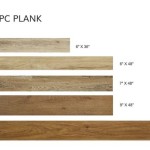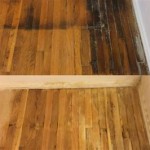Grade 1 White Oak Flooring: A Comprehensive Overview
White oak flooring has long been a popular choice for homeowners and builders alike, prized for its durability, beauty, and versatility. Among the various grades of white oak, Grade 1 represents a superior selection, characterized by its minimal imperfections and consistent appearance. Understanding the attributes and benefits of Grade 1 white oak flooring is crucial for making informed decisions regarding flooring investments.
Grading systems for hardwood flooring are established by organizations like the National Oak Flooring Manufacturers Association (NOFMA). These systems provide a standardized method for assessing the appearance and quality of the wood. While specific terminologies and criteria may vary slightly among suppliers, the core principles remain consistent. Grade 1 generally indicates a high-quality product with minimal knots, color variation, and other natural characteristics that are considered imperfections in some contexts.
The grading process begins with the selection of the raw lumber. White oak logs are carefully evaluated based on their size, straightness, and the presence of defects. The logs are then sawn into boards, and these boards are further inspected for quality. The grading process considers a variety of factors, including the size and number of knots, the presence of mineral streaks, variations in grain pattern, and any evidence of insect damage or decay. Boards that meet the stringent requirements for Grade 1 are then sorted and packaged for distribution.
Grade 1 white oak is sourced from the heartwood of the tree, which is denser and more resistant to decay than the sapwood. This natural durability, combined with the careful selection process, makes Grade 1 white oak flooring a long-lasting and reliable option. While more expensive than lower grades, the investment often pays off in terms of reduced maintenance, increased lifespan, and enhanced aesthetic appeal.
Key Point 1: Attributes of Grade 1 White Oak Flooring
The distinguishing characteristics of Grade 1 white oak flooring are primarily related to its visual uniformity and minimal flaws. This grade typically exhibits a consistent color with subtle variations, resulting in a clean and elegant aesthetic. Knots, if present at all, are exceptionally small (often pin knots) and infrequent. Mineral streaks, which are naturally occurring discolorations in the wood, are either absent or minimal. Similarly, variations in grain pattern are less pronounced in Grade 1 compared to lower grades.
In terms of dimensions, Grade 1 white oak boards are generally well-milled, with precise edges and consistent thickness. This ensures a smooth and even installation, minimizing the risk of gaps or uneven surfaces. The surface of the boards is typically free from defects such as checks (small cracks) or splits. Any imperfections present are carefully addressed during the manufacturing process, resulting in a flooring product that is virtually flawless.
The overall appearance of Grade 1 white oak flooring is one of refinement and sophistication. Its clean lines and consistent color palette allow it to blend seamlessly with a variety of interior design styles, from traditional to contemporary. This makes it a versatile choice for homeowners who want a flooring option that will stand the test of time and complement their evolving tastes.
The absence of significant character marks in Grade 1 white oak can also make it a good choice for those seeking a more formal or minimalist aesthetic. The consistent appearance provides a sense of order and tranquility, creating a calm and inviting atmosphere. The minimal imperfections also contribute to a cleaner look, which can be particularly appealing in modern and contemporary spaces.
While some may prefer the rustic charm of flooring with more pronounced knots and grain variations, Grade 1 white oak offers a distinct appeal for those who value uniformity and elegance. The refined aesthetic provides a blank canvas that allows other design elements in the room to take center stage.
Key Point 2: Benefits of Choosing Grade 1 White Oak Flooring
The advantages of opting for Grade 1 white oak flooring extend beyond its aesthetic appeal. The superior quality of the wood translates into enhanced durability and performance. Grade 1 white oak is less prone to warping, cupping, or other forms of distortion, making it a more stable and reliable flooring option. This is particularly important in areas with fluctuating humidity levels, where lower-quality flooring materials may be more susceptible to damage.
The consistent milling and precise dimensions of Grade 1 white oak boards contribute to a faster and easier installation process. Technicians spend less time addressing inconsistencies or imperfections, resulting in a more efficient and cost-effective installation. The smooth and even surface also provides a better foundation for finishing, ensuring a flawless and long-lasting finish.
Grade 1 white oak flooring is also easier to maintain than lower grades. The absence of significant knots and imperfections reduces the risk of dirt and debris becoming trapped in the wood's surface. This makes cleaning and upkeep simpler, requiring less effort to keep the flooring looking its best. Regular sweeping and occasional mopping are typically sufficient to maintain the beauty of Grade 1 white oak flooring for years to come.
Moreover, the long lifespan of Grade 1 white oak flooring makes it a sustainable choice. By investing in a high-quality product that is built to last, homeowners can reduce the need for frequent replacements, minimizing waste and conserving natural resources. White oak is a renewable resource, and responsibly sourced Grade 1 white oak flooring can be a sustainable option for environmentally conscious consumers.
The superior quality and longevity of Grade 1 white oak flooring can also increase the value of a home. Potential buyers often appreciate the aesthetic appeal and durability of hardwood flooring, making it a desirable feature that can significantly impact a home's resale value. Investing in Grade 1 white oak flooring can be a wise decision that pays off both in terms of personal enjoyment and financial returns.
Key Point 3: Considerations When Purchasing Grade 1 White Oak Flooring
While Grade 1 white oak flooring offers numerous advantages, it is essential to consider several factors before making a purchase. The price point is typically higher than lower grades, reflecting the superior quality and careful selection process. Homeowners should carefully evaluate their budget and determine whether the benefits of Grade 1 white oak justify the additional cost.
Sourcing the flooring from a reputable supplier is crucial to ensure that it meets the standards for Grade 1 white oak. It is advisable to request samples and inspect the boards for consistency in color, grain pattern, and milling. Asking about the supplier's grading process and quality control measures can also provide valuable insights into the integrity of the product.
Understanding the different finishing options available for white oak flooring is also essential. White oak readily accepts a variety of stains and finishes, allowing homeowners to customize the look of their flooring to match their personal preferences and design style. Consider the desired level of gloss, the color of the stain, and the type of sealant to achieve the desired aesthetic and protect the wood from wear and tear.
The installation process should also be carefully considered. While Grade 1 white oak flooring is generally easier to install than lower grades, professional installation is recommended to ensure a flawless and long-lasting result. Experienced installers have the expertise and tools necessary to properly prepare the subfloor, align the boards, and apply the finish, minimizing the risk of future problems.
Finally, consider the environmental impact of the flooring. Look for white oak flooring that is sourced from sustainably managed forests and certified by organizations like the Forest Stewardship Council (FSC). Choosing sustainably sourced flooring helps to protect forests and promote responsible forestry practices.
In conclusion, Grade 1 white oak flooring represents a premium choice for those seeking a durable, beautiful, and versatile flooring option. By understanding its attributes, benefits, and considerations, homeowners can make an informed decision that will enhance the value and enjoyment of their living spaces for years to come. The investment in Grade 1 white oak flooring is an investment in quality, longevity, and aesthetic appeal.

White Oak 1 Common Grade Unfinished Solid Hardwood Flooring Floor Depot

White Oak Natural Smooth 1 Common 3 4 X 9 84

White Oak Natural Smooth 1 Common 3 4 X 9 84

3 X 4 White Oak 1 Common To 10 Unfinished Solid Hardwood Flooring

White Oak Select And Better Grade Unfinished Solid Hardwood Flooring Floor Depot

White Oak Character Grade Unfinished Solid Hardwood Flooring 2 10 Random Lengths Floor Depot

White Oak Unfinished 1 Common Grade 3 4 X 8

White Oak 2 Common Grade Unfinished Solid Hardwood Flooring Floor Depot

3 2 Common Unfinished Solid White Oak Flooring

Flooring 101 Understanding Wood Grades Carlisle Wide Plank Floors
Related Posts








